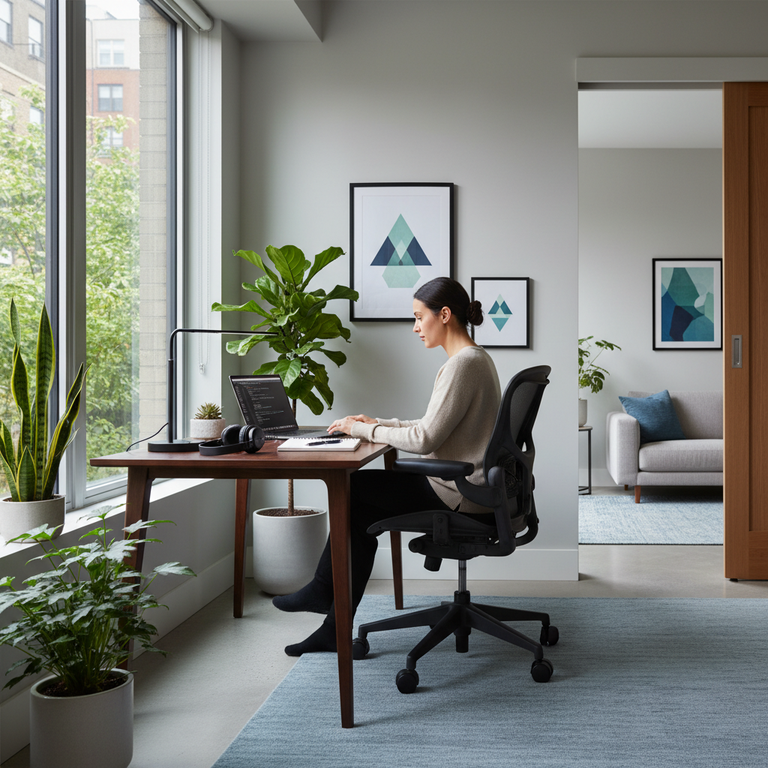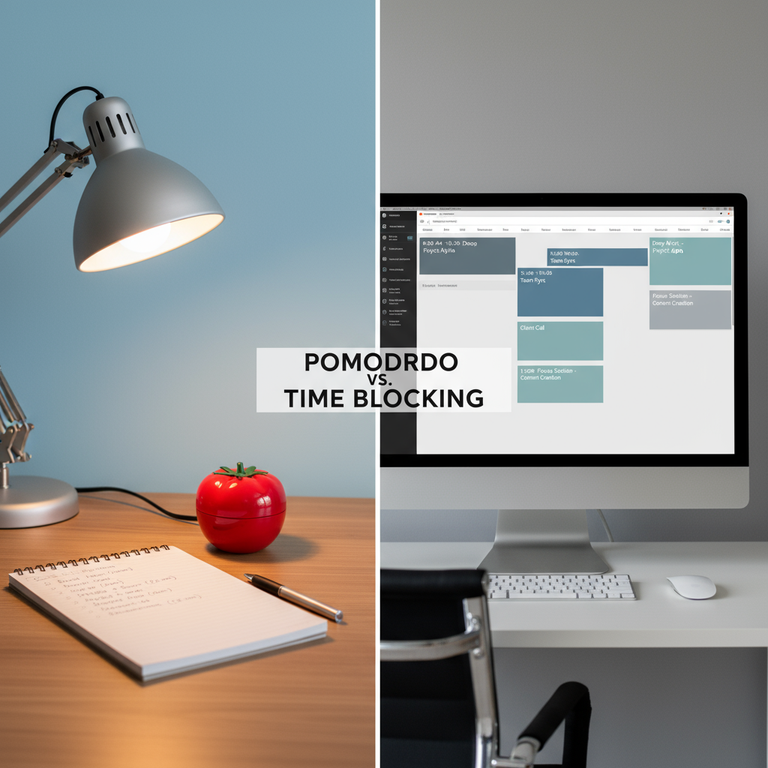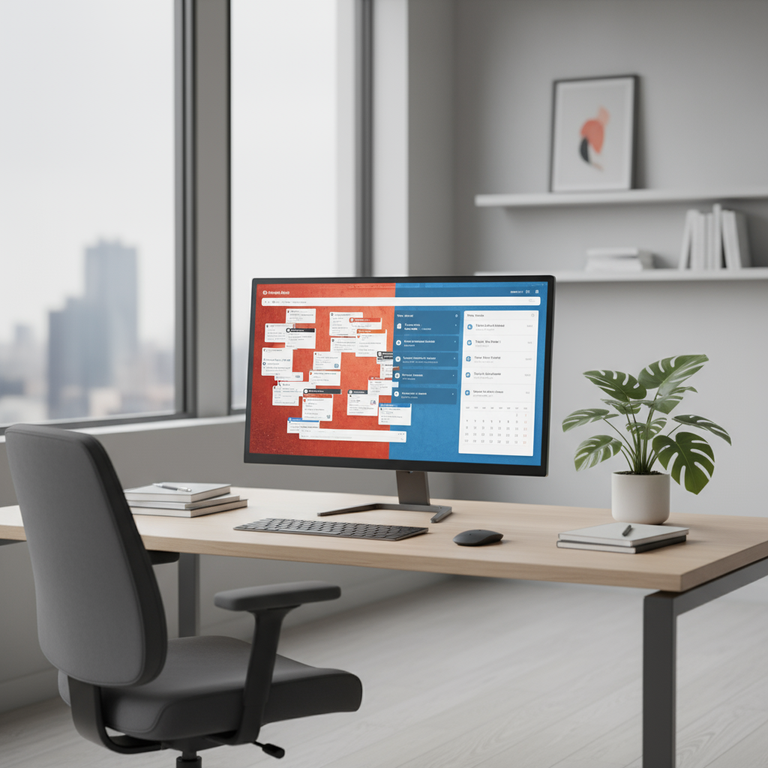High-Performance Home Office: 10 Adjustments to Your Environment and Routine to Double Your Focus
The transition to remote work promised a utopia of flexibility, comfort, and productivity. The reality, for many, has been a chaotic blend of makeshift desks, endless digital distractions, and the complete erosion of work-life boundaries. We are “at work” all the time, but rarely are we truly *working* at our peak capacity. The problem isn’t the work; it’s the environment.
Your brain is a highly sensitive instrument that takes constant cues from its surroundings. If your “office” is also your kitchen table, your entertainment center, or your bedroom, your brain receives a messy cocktail of conflicting signals: “eat,” “relax,” “sleep,” “work.” The result is a state of chronic, low-grade distraction where true “deep work” becomes impossible.
You cannot achieve elite-level focus in a low-performance environment. The solution is to intentionally engineer your surroundings for one purpose: focus. This guide provides 10 critical adjustments to your environment and routine to transform your space into a High-Performance Home Office designed to double your focus.
Why Your Default Home Office Is Designed for Distraction
Most home offices are not *designed* at all; they are simply the “path of least resistance.” A spare corner, a comfortable sofa, the kitchen counter. These spaces are inherently optimized for domestic life, not for cognitive performance. Every item in your eye-line—a stack of mail, a TV remote, a pile of laundry—is a tiny, visual “open loop” that steals a fraction of your mental energy.
A High-Performance Home Office, by contrast, is built on the philosophy of “intentional design.” It’s not about expensive furniture; it’s about strategic elimination. It’s about creating a sterile, focused “cockpit” where the only possible action is the high-value work you’ve planned to do. Your environment should *pull* you into focus, not constantly push you into distraction.
This requires a conscious effort to modify both your physical space (environment) and your behavioral patterns (routine). Both are inextricably linked.
10 Adjustments for a ‘High-Performance Home Office’
Implement these 10 adjustments to systematically remove friction from deep work and add friction to shallow distractions. This is how you double your focus and create a genuine High-Performance Home Office.
1. The “Sacred” Boundary: One Space, One Purpose
This is the most critical rule. Your brain forms powerful associations with locations. You must have a physical space—even if it’s just a small desk in the corner of a room—that is used for *nothing but focused work*.
This means: no casual web browsing, no social media, no eating, no watching videos in this space. When you sit in this “focus chair,” your brain must know, unequivocally, that it is time to work. This creates a powerful psychological trigger. If your space is multi-purpose, it will always be a space of compromise and distraction. A dedicated zone is the first step to a High-Performance Home Office.
2. Optimize Your “Digital Environment” First
Your physical environment is only half the battle. Your *digital* environment is often the primary source of distraction. You cannot double your focus if your screen is a minefield of notifications.
A High-Performance Home Office setup includes a “sterilized” digital workspace. This means:
- Using separate browser profiles (e.g., one for “Work” with zero personal bookmarks, one for “Personal”).
- A clean desktop with zero files. Everything is filed away.
- Closing all tabs and apps not directly related to the single task at hand.
- Using a “focus” app (like Freedom or Cold Turkey) to block distracting websites during your work sprints.
3. Control Your Inputs: The “Notification” Blackout
The “always on” culture is the death of deep work. A High-Performance Home Office is a “push” environment, not a “pull” one. You *decide* when to get information; it is not “pushed” on you.
This means a total “notification blackout” during your deep work blocks. This is non-negotiable.
- Turn off *all* desktop notifications (Email, Slack, Teams, etc.).
- Turn off *all* audible pings and buzzes.
- Put your phone in another room. Not “face down on the desk.” Not “on silent.” In. Another. Room.
The fear of “missing something” is an illusion. True high-performers are “in the zone” for 90-minute blocks and “check in” with the world on their own terms, during planned breaks.
4. Friction Auditing: Make Focus Easy, Distraction Hard
This is a core concept for environment and routine. Your behavior follows the path of least resistance. Conduct a “friction audit” of your workspace.
How much friction is there to starting deep work? (e.g., “I have to find my notebook, clear my desk, find my charger…”)
How much friction is there to being distracted? (e.g., “My phone is right here, social media is one click away…”)
Your goal is to *reverse* this. Add friction to distractions (put the phone in a drawer in another room). Remove friction from focus (have your notebook, pen, and water on your desk, ready to go *before* you start).
5. Light Like a Laboratory: The Power of “Task Lighting”
Our brains are biologically programmed to respond to light. Dim, warm, “cozy” lighting signals the brain to relax and prepare for sleep. This is terrible for focus. A High-Performance Home Office needs to feel like a bright, alert, energetic space.
Use “daylight” temperature bulbs (5000K-6500K). More importantly, use direct “task lighting” (a bright desk lamp) focused on your work area. This isolates your workspace visually and sends a strong psychological signal to your brain to “wake up” and concentrate.
6. The Ergonomic Foundation: Your Chair and Desk
You cannot double your focus if you are in physical pain. Aches, strains, and discomfort are constant, low-grade physical “distractions” that drain your energy. Investing in a high-quality ergonomic chair and setting your desk/monitor to the correct height is not a luxury; it is a foundational requirement for a High-Performance Home Office.
Your monitor should be at eye level, and your arms should be at a 90-degree angle when typing. This physical “alignment” prevents the fatigue that kills productivity in the afternoon.
7. “Clear Desk, Clear Mind”: The End-of-Day Shutdown
This is a critical *routine* adjustment. The state you leave your office in today is the state you will inherit tomorrow. A cluttered desk in the morning creates immediate friction and a feeling of overwhelm.
Create a 5-minute “shutdown ritual.” At the end of your workday, clear everything off your desk. Wipe it down. Put away notebooks. Organize files. Write your to-do list for tomorrow. This ritual not only provides a clean slate for the next day, but it also acts as a powerful psychological signal to your brain that the “workday is over,” helping you to disconnect.
8. The “Commute” Ritual: Bookending Your Day
One of the biggest downsides of remote work is the loss of the “commute.” The commute, for all its flaws, provided a forced “buffer” between “work life” and “home life.” In a High-Performance Home Office, you must recreate this buffer.
Create a “start-up” and “shut-down” ritual. Your “start-up commute” might be: go for a 10-minute walk, come back inside, make a coffee, and sit down at your desk. Your “shut-down commute” might be: your 5-minute desk clear-out, followed by changing out of your “work clothes.” This environment and routine adjustment creates the mental boundary you need to be fully “on” and fully “off.”
9. Soundscaping for Deep Work
A home office is rarely silent. Dogs, family members, or street noise can break your flow. A High-Performance Home Office controls the auditory environment. Sudden, variable noise is the enemy. Consistent, predictable noise is a tool.
Use high-quality, noise-canceling headphones. More importantly, use “soundscaping.” This could be instrumental music (no lyrics), white noise, or “binaural beats” designed for focus. This creates an “auditory bubble” that signals to your brain that it’s time for deep work.
10. The “Go-Bag” for Focus: Be Ready for Deep Work
Your peak energy for deep work may not always align with being at your desk. Sometimes a change of scenery (like a library or a different room) is needed. To remove friction, have a “focus go-bag” ready.
This bag contains *only* what you need for a deep work session: your laptop, charger, a specific notebook, and headphones. When you feel the need to move, you don’t waste 15 minutes gathering supplies. You grab the bag and go. This is an advanced environment and routine tactic for a truly flexible High-Performance Home Office.
Conclusion: Your Environment Is a Performance Tool, Not a Background
Stop treating your home office as a passive backdrop. It is an active participant in your work. It is either your greatest ally in achieving deep work or your greatest adversary. A messy, distracting, multi-purpose space will always produce messy, distracted, compromised work.
By making these 10 intentional adjustments to your environment and routine, you are not just tidying up; you are designing a system. You are building a High-Performance Home Office—an environment meticulously engineered to remove distraction, lower friction, and double your focus. Your focus is your most valuable asset; it’s time to give it an environment where it can thrive.







